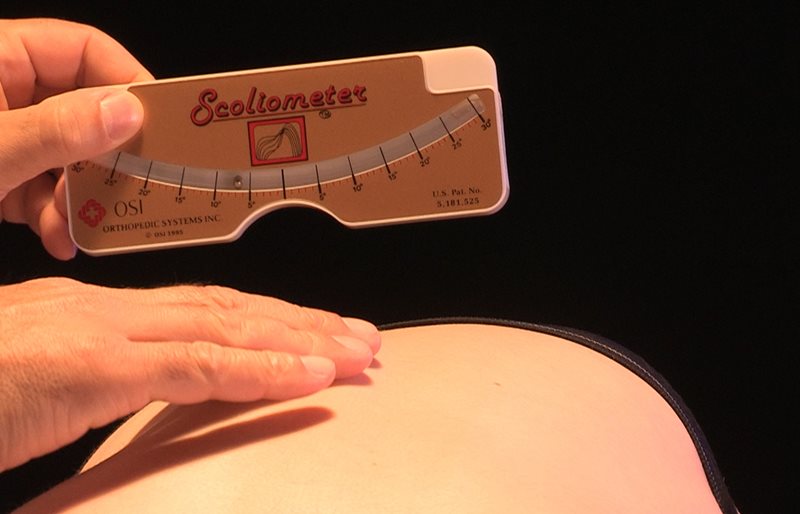Scoliosis Screening
Scoliosis Screening
Scoliosis usually occurs in early adolescence, becoming more noticeable during a growth spurt. The child’s physician or school nurse will screen for scoliosis by having the child perform the Adam’s Forward Bend Test to look for any unevenness or abnormalities in the shoulders, rib cage or back. They can also screen using a device called the scoliometer or by taking an X-ray.
Forward Bend
The Adam’s Forward Bend Test is a standard exam often used by doctors or school nurses that can be performed by a parent as well. The examiner asks kids to bend at the waist as if they were touching their toes, then gets his or her eyes level with the child’s back to look for one side being higher than the other or any asymmetry of the back. This is a simple screening test that can detect potential problems. If you notice any unevenness, you should contact your pediatrician or primary care physician for an exam.
Using a Scoliometer
Scoliosis is usually confirmed by taking an X-ray of the entire spine looking from front to back. Once a diagnosis is made, your doctor will begin discussing scoliosis treatment options.
Spinal Screening for Scoliosis (English | Spanish)
Forward Bend
The Adam’s Forward Bend Test is a standard exam often used by doctors or school nurses that can be performed by a parent as well. The examiner asks kids to bend at the waist as if they were touching their toes, then gets his or her eyes level with the child’s back to look for one side being higher than the other or any asymmetry of the back. This is a simple screening test that can detect potential problems. If you notice any unevenness, you should contact your pediatrician or primary care physician for an exam.
Using a Scoliometer
- Ask the child to slowly bend forward until the shoulders are level with the hips. The examiner should view the child from the back with eyes at the same level as the back.
- Adjust the bending position height so the deformity of the spine is most pronounced.
- Gently lay the scoliometer across the deformity at right angles to the body, with the marking centered over the curve. Observe the scoliometer reading.
Scoliosis is usually confirmed by taking an X-ray of the entire spine looking from front to back. Once a diagnosis is made, your doctor will begin discussing scoliosis treatment options.
Spinal Screening for Scoliosis (English | Spanish)

